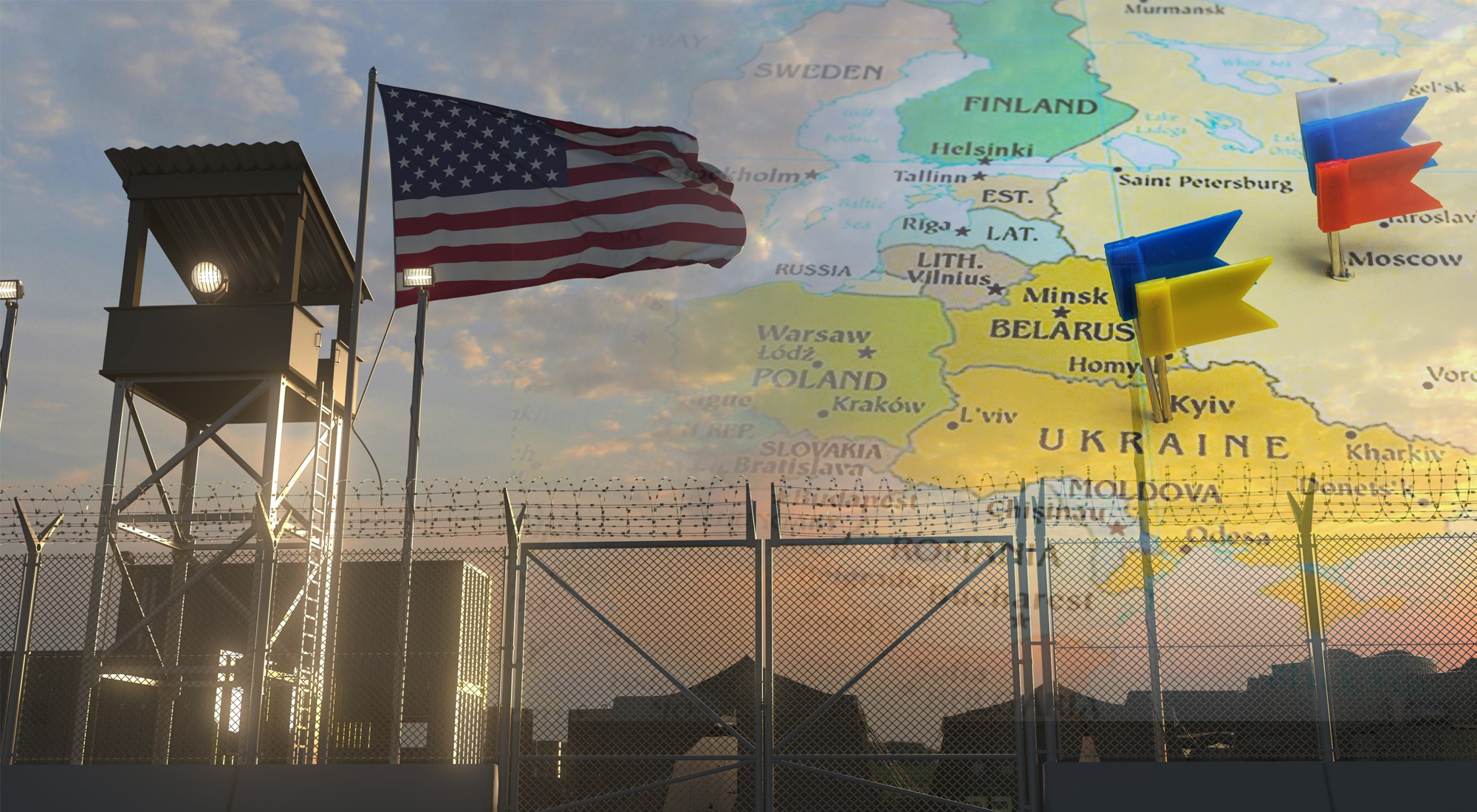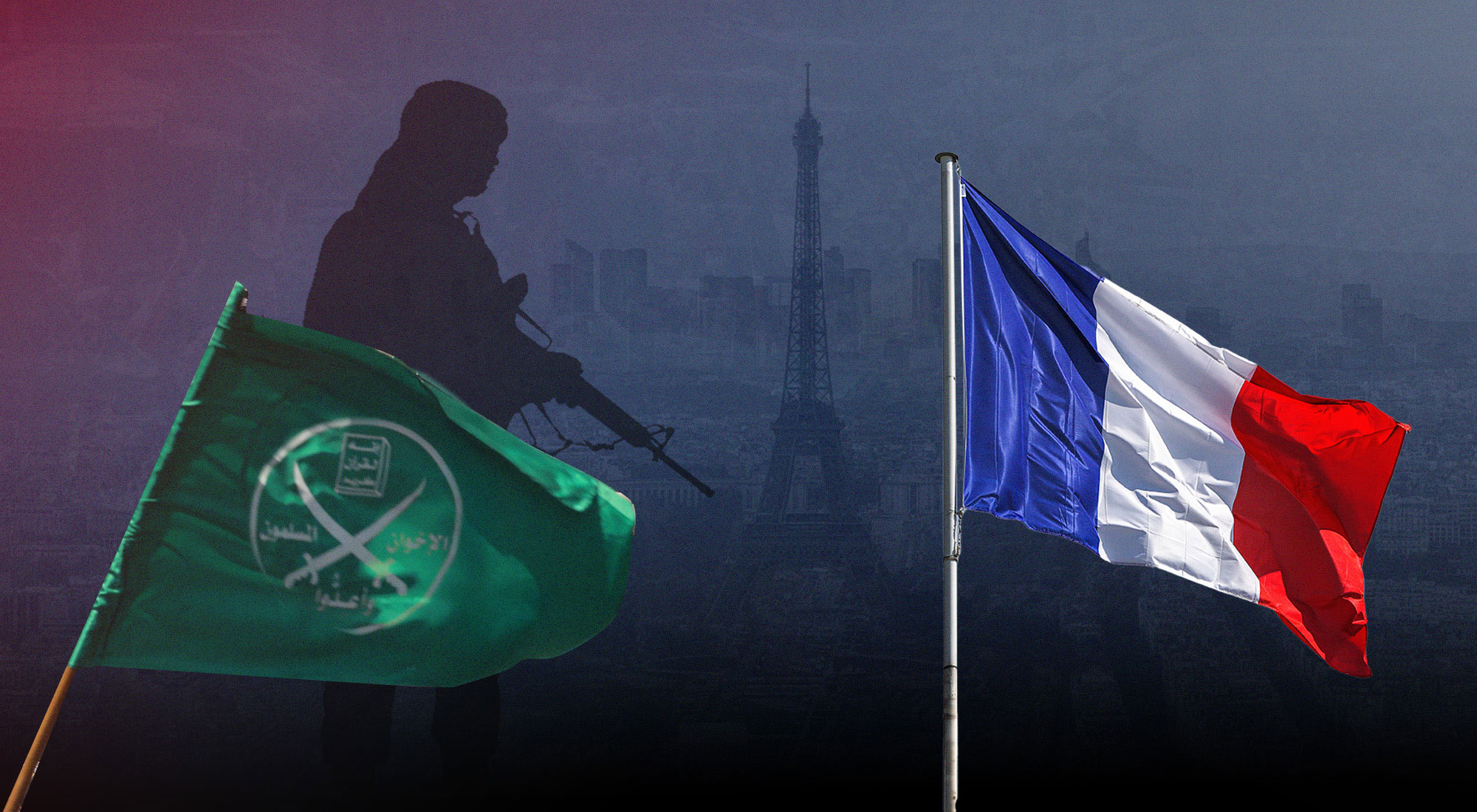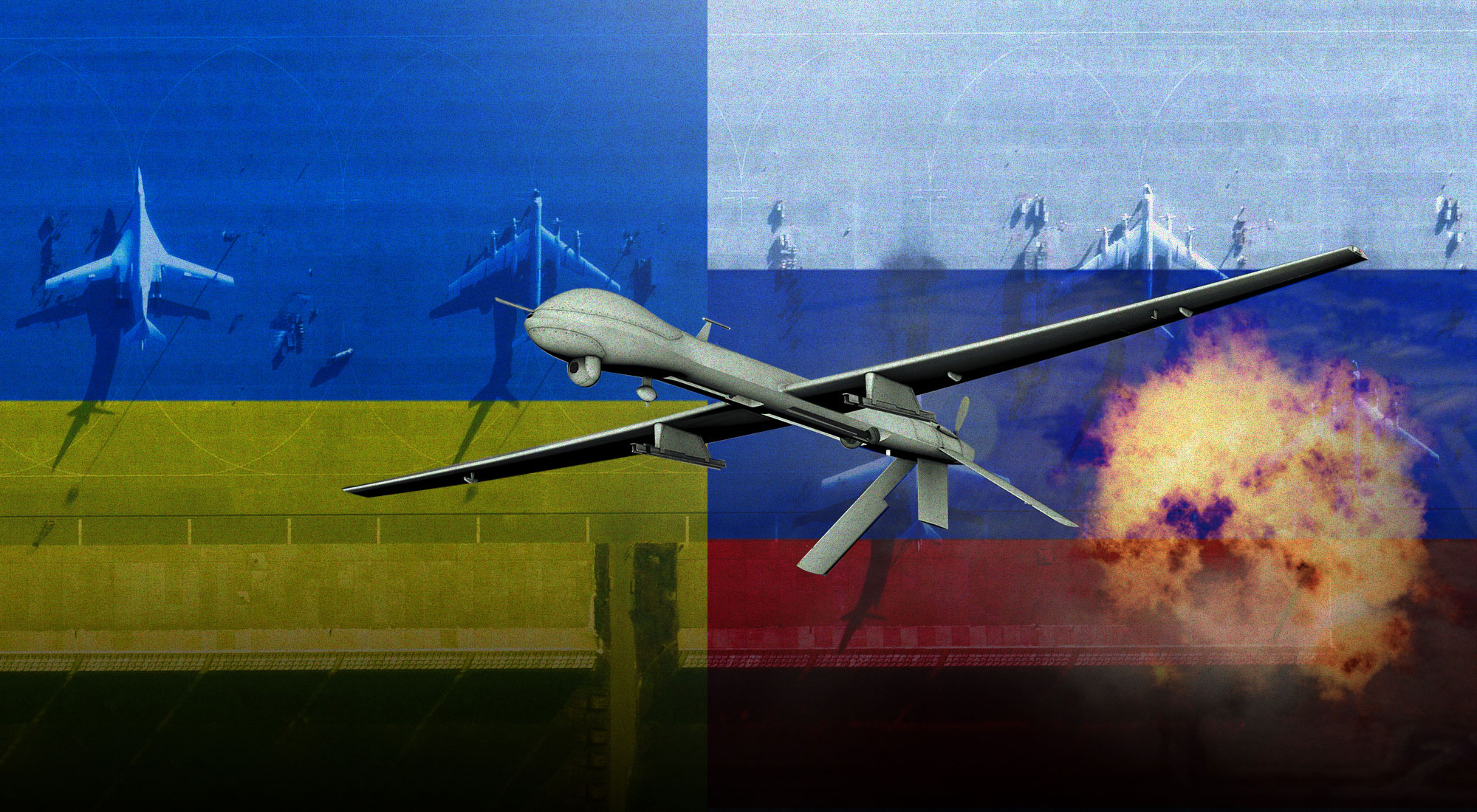Russia’s military operation in Ukraine, on 24 February 2022, has triggered a series of unprecedented policies by the US and its European allies, either in terms of economic sanctions or military measures. Although the duration and the outcome of the war itself remains uncertain, many of those decisions will have a lasting impact and will arguably shape Western military postures for the coming years. In a world of limited public expenditures, this means that hard choices will have to be made regarding the priorities of US international commitments. The Biden administration may claim that it can “walk and chew gum at the same time”, but as Washington refocuses its efforts on protecting Europe’s “eastern flank” – to use the NATO terminology designating its area of operation adjacent to Russia – it will undoubtedly review its engagements elsewhere, from the Indo-Pacific to the Middle East.
Protecting the eastern flank
So far, US and European military responses to the decision of Vladimir Putin to invade Ukraine have primarily aimed at deterring horizontal escalation. In other words, the ongoing increase of Western military deployments is meant to prevent a spill-over of the ongoing conflict, not to confront Russia. Admittedly, both the US and the EU quickly announced the delivery of weapons packages to Ukraine (estimated respectively at 350 million USD and 496 million USD), but those transfers are unlikely to tilt the balance between Ukrainian and Russian armed forces.[1] It may hinder the offensive of the latter, but it does not compensate for their overwhelming superiority.
At the NATO level, the organization quickly responded. On the day of Russia’s military operation, NATO Secretary General Jens Stoltenberg announced that over 100 jets and 120 ships were on high alert.[2] Additionally, NATO took the decision to activate for the first time its Response Force (NRF), a joint multinational unit operating under the command of NATO Joint Force Command in Brunssum (Netherlands). Created after the Prague Summit in 2002 and coined the “spearhead force” of NATO, the NRF currently comprises 40,000 troops. It is yet unclear where those forces will be precisely deployed, though they are expected to shore up the defense of Eastern European NATO member states.
The size of the NRF signals that its purpose is to protect the territories of the Alliance, or as Stoltenberg stated, “to prevent any miscalculation and a misunderstanding that we are not ready to protect and defend all Allies.”[3] Likewise, the Supreme Allied Commander for Europe, US General Tod Wolters, carefully emphasized that the NRF will be used “in a deterrence and defence role.”[4]
In terms of Western military deployments, many of the most significant measures were already in the making before the war, but have been accelerated since then. For instance, France, Belgium, Italy, Germany, and the UK are to send additional troops and fighter jets to Romania, a NATO member state that shares a border with Ukraine. The whole deployment will amount to approximately 1,000 soldiers. Such a scale is relatively modest given the presence of about 190,000 Russian soldiers on the other side of the border. This too indicates that the objective is not to prepare for a direct confrontation with Russian forces, but rather to reassure Romania of NATO solidarity.[5]
Meanwhile, in the highly sensitive domain of nuclear policies, US and NATO leaders exercised restraint following the announcement of Russian President Putin, on Sunday 27 February, that he had ordered his military to put nuclear forces on “special alert.”[6] Two days later, the head of US Strategic Command, Admiral Charles Richard, stated that there was no need to change the status of US nuclear forces. Later that week, US Secretary of Defense Lloyd Austin canceled a previously planned test launch of a Minuteman-III intercontinental ballistic missile to avoid any miscommunication with the Russian side.[7]
Overall, Western decisions are consequential and demonstrate a resolve to act militarily that seemed gone since the end of the cold war. Most remarkably, Germany decided to double its annual defense expenditures from 47 billion euros in 2021 to 100 billion euros.
To support the ongoing military surge in Europe, the US Department of Defense also announced the deployment of 14,000 troops to Eastern European and Baltic NATO members.[8] At the moment, most of these additional personnel and capabilities are relocating from other US military bases in Europe, specifically from Italy and Germany. They reflect more a rebalancing of US military deployments within Europe than a massive increase of American presence on the continent. It also builds on the US permanently stationed forces in Europe, which included about 80,000 men prior to the war.[9]
This Western military build-up is unprecedented and may include further personnel and capabilities as the crisis in Ukraine evolves. In that perspective it is safe to say that the US and NATO allies will look at the security developments on the eastern flank as their top priority for the coming years. Subsequently, this will also impact Western commitments elsewhere.
Coincidentally, the war in Ukraine occurred in the middle of several review exercises in the US and Europe regarding their international policies. Last November, the US administration issued an Interim National Security Strategic Guidance and a Global Posture Review indicating its desire to refocus its resources on the Indo-Pacific and Europe. A new US National Defense Strategy is supposed to follow in the coming weeks, though its release may now be delayed by the war. Likewise, the EU is scheduled to adopt a new strategic document, the Strategic Compass, during the month of March. A draft dated from November 2021 already revealed that the EU was, finally, taking stock of the return to power politics – a recognition that will now be amplified by the events in Ukraine. Finally, NATO is planning on releasing a new Strategic Concept at its next Summit in Spain, in June of this year, and the Russian operation will now inevitably shape the discussion of that document.
The preparation of all these official strategy documents predated the war in Ukraine but their publication, at the time of the biggest crisis in Europe since the end of the Cold War, will now pave the way for a broader reconsideration of Western international commitments. For the US, the only Western country with a truly global military presence, these discussions may lead to critical choices vis-a-vis the two other most important regions for Washington: the Indo-Pacific and the Middle East.
The eluding pivot to the Indo-Pacific
From the outset, the Biden administration announced its clear intention to focus its global strategy towards the Indo-Pacific region. This was evidenced by the first official reports such as the Interim National Security Strategic Guidance, and later the Global Posture Review as well as the Indo-Pacific Strategy released only a few weeks before the war in Ukraine started.
In the summer of 2021, the US military operation in Afghanistan may have ended in a calamitous fashion amid the takeover of Kabul by the Taliban, but the withdrawal also indicated the resolve of President Biden to put an end to the two-decade-long war on terror, suggesting that this would allow Washington to concentrate on the strategic competition with China. Then in September, the creation of AUKUS, a new alliance with the UK and Australia, followed by a meeting of the QUAD – the quadrilateral security dialogue with India, Japan, and Australia – also supported the Indo-Pacific momentum.
But by the end of 2021, as tensions in Europe grew and the threat of a Russian operation increased, the policy discussions in Washington shifted. US experts suddenly feared that a US response in Europe could compromise Washington’s ability to compete with China in the Indo-Pacific, some analysts going as far as to depict Ukraine as a “distraction from Taiwan.”[10] Interestingly, the discussion on Taiwan led to two opposing assertions: either the US escalated in Europe against Russia and left Taiwan at the mercy of a Chinese intervention, or the US stood still in front of Putin’s aggression, implying a similar lack of resolve on the issue of Taiwan. Both arguments assume an analogy between Ukraine and Taiwan that is highly questionable though. Washington has made security commitments to Taipei that it never made to Kiev, and the readiness of Taiwanese forces is on its own much more advanced than what the Ukrainian forces’ was.
Still, the idea that the US will, again, de-emphasize the Indo-Pacific region out of the necessities in Europe is gaining traction in Asia, where the Ukrainian conflict is largely perceived as a distant issue. Kishore Mahbubani, a Singaporean former diplomat, argued “just as the Iraq war was a geopolitical gift to China,[sic] it gave China 10 free years to grow,[sic] this Ukraine thing could also give China 10 free years to grow.”[11]
The conundrum facing the Biden administration is not a new one and echoes those faced by the three previous US presidents. In the summer of 2001, the Bush national security team intended to focus its attention on China until the terrorist attacks of 9/11 forced them to address the threat of Al Qaeda. A decade later, President Obama hoped that the reduction of troops in Iraq and Afghanistan could allow more military personnel to Asia. And only two years ago, the Trump administration was planning to remove forces from Germany to reassign them to the Indo-Pacific region.[12] Therefore, the US pivot to the Indo-Pacific may, again, have to wait a bit longer.
Towards a US withdrawal from the Middle East?
Probably more than Asia, it is the Middle East that could be the first region to feel the consequences of the US re-emphasis on Europe. Until the Biden presidency, most of the Gulf and Israeli concerns with the US policy in the Middle East had less to do with the resources allocated by the Pentagon to the region than with the lack of resolve – in the eyes of Middle Eastern partners – of US decision-makers to remain committed to the region. In fact, resource-wise, the US military footprint in the Middle East has remained stable for the past decade.
But as President Biden built his national security team, it was not lost on Middle Eastern policy-makers that a significant number of his political appointees were proponents of decreasing US involvement in the Middle East.[13] Fears of a disengagement were already evident before the crisis in Ukraine escalated in late 2021.[14] First, the Interim National Security Strategic Guidance released in March of last year announced that the US would “right-size our military presence” in the Middle East – a diplomatic way of qualifying a decrease.[15]
This “right-sizing” started materializing in June 2021, when the US Defense Department announced the removal of a significant number of assets from the region such as eight Patriot antimissile batteries, a THAAD system in Saudi Arabia, and fighter jets.[16] Last November, the public summary of the Global Posture Review did not bode well either for the US presence in the Middle East. The region was left at the bottom of the document with a six-line paragraph that merely stated that “additional analysis” was required to assess the needs of the Central Command.
The war in Ukraine may undermine the desire of the Biden administration to focus their efforts on the Indo-Pacific, but in the Middle East, it will very likely strengthen the momentum to remove US forces. To date, there is no official statement confirming such a trend, but it is reasonable to assume that in the coming weeks, the Pentagon will review the size of its units operating in the Middle East.
As of today, a potential conflict in Europe would be fought on air and land, rather than at sea: for the moment there has not been any sign of escalation in the Mediterranean Sea, where the Russian Navy keeps a significant fleet. Given the prevailing scenario, the US administration may consider reshuffling ground forces and air assets from the Central Command to the European Command. In that context, the Indo-Pacific Command, historically led by the US Navy, would be less affected.
In Washington’s eyes, US priorities for the Middle East – deterring Iran and counterterrorism operations against groups like ISIS[17] – do not demand a massive presence on the ground. Those missions could be achieved with a lighter footprint and a greater emphasis on the use of US Special Operations Forces as well as capabilities like unmanned aerial vehicles (UAVs).[18]
In a similar vein, US experts have been discussing the relevance of maintaining big forward operating bases with permanently stationed troops and capabilities, and have called for smaller detachments that would reduce the costs while maintaining access to these regions. Such measures would first and foremost affect Gulf states, and in particular Kuwait and Qatar, which together account for roughly 50% of US military forces in the region with around 10,000 soldiers on their territories.[19]
However, one should not assume that a US rebalancing from the Middle East to Europe would be easily done. First, US global strategy is not immune to bureaucratic battles, and it is very likely that regional commands such as the Central Command and the Indo-Pacific Command will try to prevent a massive pullout of their resources. Second, redrawing the map of US bases in the Middle East has less to do with operational needs than with diplomacy. As pointed out by Renanah Joyce and Becca Wasser, basing arrangements result from bilateral negotiations between the US and the host countries and this severely constrains the idea of transforming CENTCOM into a network of smaller points of access.[20] Finally, the eruption of other regional crises may challenge the current prevailing assumptions: after his election, former President Trump had similarly expressed his desire to leave the Middle East, but he eventually approved an increase of 14,000 soldiers in 2019 and 3,500 in 2020 amid tensions with Iran.[21]
If those points call for a measured evaluation of a potential US retreat from the Middle East, the events in Europe will define the order of priorities for the Biden administration. They may not lead to a full disengagement, but they will plead for a more restrained US policy in the region. Given the diplomatic agenda of the coming months, the outcome of the negotiations on Iran’s nuclear program will be a first indicator of the US Middle East approach after Russia’s military operation in Ukraine.
References
[1] John Chalmers, “Dramatic Zelenskiy Call Prompted EU Move to Provide Arms,” Reuters, March 2, 2022, https://www.reuters.com/world/europe/dramatic-call-with-ukraine-leader-prompted-historic-eu-move-provide-arms-2022-03-02/.
[2] North Atlantic Treaty Organization, “Press Conference by NATO Secretary General Jens Stoltenberg Following the Extraordinary Virtual Summit of NATO Heads of State and Government,” February 25, 2022, https://www.nato.int/cps/en/natohq/opinions_192455.htm.
[3] Ibid.
[4] “Saceur Statement on the Activation of the NATO Response Force”, Supreme Headquarters Allied Powers Europe, February 25, 2022, https://shape.nato.int/news-archive/2022/saceur-statement-on-the-activation-of-the-nato-response-force.
[5] John Irish and Luiza Ilie, “France Not Provoking Russia with NATO Battle Group for Romania, Paris Says,” Reuters, February 3, 2022, https://www.reuters.com/article/ukraine-crisis-romania-france-idUSL8N2UE3C9.
[6] Yuras Karmanau, Jim Heintz, Vladimir Isachenkov and Dasha Litvinova, “Putin Puts Nuclear Forces on High Alert, Escalating Tensions,” Associated Press News, February 28, 2022, https://apnews.com/article/russia-ukraine-kyiv-business-europe-moscow-2e4e1cf784f22b6afbe5a2f936725550.
[7] Michael R. Gordon, “U.S. Cancels ICBM Test Launch Amid Ukraine Tensions”, Wall Street Journal, March 2, 2022, https://www.wsj.com/articles/u-s-cancels-icbm-test-launch-amid-ukraine-tensions-11646252582.
[8] Meghann Myers, “More US Troops Could Head to Europe Amid Russian Invasion of Ukraine, Pentagon Says,” Military Times, March 1, 2022, https://www.militarytimes.com/flashpoints/ukraine/2022/02/28/more-us-troops-could-head-to-europe-amid-russian-invasion-of-ukraine-pentagon-says/.
[9] Joe Gould, “Pentagon Revisiting Long-term US Troop Levels in Eastern Europe,” Defense News, March 2, 2022, https://www.defensenews.com/pentagon/2022/03/01/pentagon-revisiting-long-term-us-troop-levels-in-eastern-europe/.
[10] Elbridge Colby and Oriana Skylar Mastro, “Ukraine Is a Distraction from Taiwan,” Wall Street Journal, February 13, 2022, https://www.wsj.com/articles/ukraine-is-a-distraction-from-taiwan-russia-china-nato-global-powers-military-invasion-jinping-biden-putin-europe-11644781247.
[11] Arvind Jayaram, “ST Roundtable: Ukraine Crisis Will Shift US Focus from Asia-Pacific Back to Europe,” The Straits Times, March 1, 2022, https://www.straitstimes.com/singapore/st-roundtable-aseans-weakness-is-also-an-asset-says-veteran-singapore-diplomat.
[12] Robert O’Brien, “Why the US Is Moving Troops Out of Germany: Forces Are Needed in the Indo-Pacific. And Berlin Should Contribute More to European Security,” Wall Street Journal, June 21, 2020, https://www.wsj.com/articles/why-the-u-s-is-moving-troops-out-of-germany-11592757552.
[13] Mara Karlin and Tamara Cofman Wittes, “How to Do More with Less in the Middle East”, Foreign Affairs, September 15, 2020, https://www.foreignaffairs.com/articles/middle-east/2020-09-15/how-do-more-less-middle-east.
[14] Leonardo Jacopo Maria Mazzucco and Kristian Alexander, “Growing Pains: The Promise and Reality of Biden’s Middle East Policy”, Fikra Forum, Washington Institute for Near East Policy, January 24, 2022, https://www.washingtoninstitute.org/policy-analysis/growing-pains-promise-and-reality-bidens-middle-east-policy.
[15] The White House, “Interim National Security Strategic Guidance,” March 2021, p.15, https://www.whitehouse.gov/wp-content/uploads/2021/03/NSC-1v2.pdf.
[16] Gordon Lubold, Nancy A. Youssef and Michael R. Gordon, “U.S. Military to Withdraw Hundreds of Troops, Aircraft, Antimissile Batteries from Middle East,” Wall Street Journal, June 18, 2021, https://www.wsj.com/articles/u-s-military-to-withdraw-hundreds-of-troops-aircraft-antimissile-batteries-from-middle-east-11624045575.
[17] See ” Posture Statement of General Kenneth F. Mckenzie, Jr., Commander, United States Central Command Before The Senate Armed Services Committee,” U.S. Central Command, April 22, 2021, https://www.centcom.mil/ABOUT-US/POSTURE-STATEMENT/.
[18] Ilan Goldenberg, Becca Wasser, Elisa Catalano Ewers and Lilly Blumenthal, “When Less is More: Rethinking U.S. Military Strategy and Posture in the Middle East,” Center for New American Security, November 4, 2021, https://www.cnas.org/publications/reports/when-less-is-more.
[19] International Institute for Strategic Studies, The Military Balance 2022 (London: Routledge, 2022): p.62.
[20] Renanah Joyce and Becca Wasser, “All About Access: Solving America’s Force Posture Puzzle,” The Washington Quarterly 44, no.3 (2021): pp.45-67.
[21] US Department of Defense, “DOD Statement on Deployment of Additional U.S. Forces and Equipment to the Kingdom of Saudi Arabia,” Press Release, October 11, 2019, https://www.defense.gov/News/Releases/Release/Article/1987575/dod-statement-on-deployment-of-additional-us-forces-and-equipment-to-the-kingdo/.








